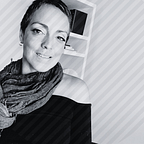With its vast array of species and ecosystems, life on Earth has harnessed biodiversity as its primary strategy for thriving. In a similar vein, cultural diversity holds the potential to be the transformative force needed to tackle the global challenges we face today.
The movements for gender equality and civil rights have played pivotal roles in championing diversity and emphasizing its significance. Beyond encompassing gender and race, cultural diversity extends to the multitude of traditions, ethnicities, beliefs, and worldviews found on the planet.
The richness of this global human diversity lies in the myriad ways we perceive and engage with the world. Embracing and celebrating cultural diversity can foster innovation, deepen understanding, and lead to more inclusive solutions.
By integrating cultural diversity into our processes, we can forge a comprehensive and enriched approach to problem-solving, fostering a better world for all.
From the Industrial to the Design Age.
During the Industrial Age, design primarily revolved around standardization and mass production. However, in the Information Age, design has taken center stage in our processes, with an increasing recognition of the importance of human-centered design.
Two critical stages in the design process are empathy and ideation, where we naturally integrate the mechanism of collective intelligence. However, until now, our designs have predominantly catered to the values and needs of a small population segment.
Consequently, this has resulted in a mainstream culture primarily shaped by a dominant group or those who wield control over means of production and dissemination.
This homogenous culture, built upon a minute fraction of the population’s values, vision, and needs, starkly contrasts with nature’s strategy of embracing diversity.
Fear and Control-Based Culture
The shadow side of our homogeneous mainstream culture lies at the heart of today’s most pressing global challenges, including pollution, water scarcity, poverty, unhappiness, and climate change.
Our current processes are constructed on a narrow-minded vision that primarily engages with the world through fear and the desire for control. This “control” often leads to apprehension toward anything different or unfamiliar, whether it be foreigners, ethnicities, nature, or even our neighbors.
This fear-driven mindset fuels a relentless pursuit of control and competition, neglecting the interconnectedness of all things and disregarding the common good.
We need a wide spreading of inclusive, culturally diverse, human-centric design. Incorporating coexisting visions and tapping into global intelligence, we can unlock the full potential of diverse perspectives and better respond to our challenges, thus creating a better future for all.
From Magic Realism to News from the World
In the movie “News from the World,” Tom Hanks portrays Jefferson Kyle Kidd, a former Confederate traveling through Texas, reading newspaper stories to locals for ten cents. Along his journey, he meets Cicade, a 10-year-old white girl raised by the Kiowa people.
Their friendship blossoms, and they share their contrasting perspectives of the world in one particular scene. Jefferson’s violent and danger-driven outlook contrasts with Cicade’s view of Earth as a loving mother who cares for her children.
These cultural perceptions shape their experiences and the surrounding culture they each belong to.
Now, let’s take a moment to appreciate this incredible photograph captured by photographer Munkhchulkuuny in 2021. It features a lovely Mongolian girl, moments before releasing her arrow while bareback riding her horse.
When studying human development, we understand that the initial intelligence children acquire is motor sensory intelligence. This crucial process enables them to acquire and refine motor skills and sensory abilities, allowing children to coordinate their movements and interact with their surroundings effectively.
Consider the remarkable skills and mindset this 10-year-old girl must have cultivated to hunt and perform this way. As someone who grew up in a city, I know this goes beyond the gymnastic figures we may have performed during our gym classes on Saturday mornings.
Now, envision this young girl, empowered and collaborating within a team, using her talents to design innovative solutions for the world’s challenges. Imagine the extraordinary quality and richness she would bring to the table during the ideation process and beyond.
The potential within her and in children across the globe is our most valuable asset. Besides, wouldn’t you just want her to become the future CEO of your company? Because I certainly would.
